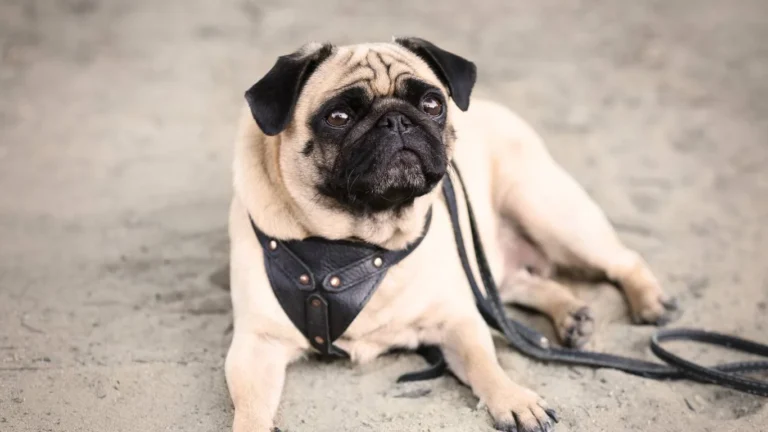What to do if a dog’s ear is swollen: Causes and when to worry
If your dog’s ear looks puffy, red, or larger than usual, it could be swollen. This might seem like a small problem, but it can cause pain, irritation, and even lead to infection if not treated. A swollen ear can be caused by several things—from ear infections to allergies to injuries. Knowing what to look for and what to do can help your dog feel better faster and avoid more serious issues.
Understanding a Dog’s Ear
A dog’s ear is made up of three parts: the outer ear (what you see), the middle ear, and the inner ear. The outer ear includes the flap, called the pinna, and the ear canal. This area can easily trap dirt, moisture, and bacteria, especially in dogs with floppy ears like Cocker Spaniels or Basset Hounds.
Inside the ear, there are nerves, blood vessels, and cartilage. When the outer ear becomes irritated or injured, fluid or blood can collect under the skin, making the ear appear swollen or squishy to the touch.
Understanding this basic structure can help you recognize problems early and know when it’s time to act.
How It Works: What Happens When a Dog’s Ear Swells
Swelling in a dog’s ear is usually the result of inflammation. This means the body is responding to a trigger—like an injury, infection, or allergen. The blood vessels expand, and fluid may leak into the tissues, causing puffiness.
One common type of swelling is called an aural hematoma. This happens when blood vessels inside the ear flap burst, usually from head shaking or scratching. The blood pools under the skin, forming a painful bulge.
Other types of swelling may involve infections, which often cause redness, discharge, or a bad smell. Some dogs may also react to bug bites or allergens with swelling and itchiness.
Common Causes of a Swollen Dog Ear
- Ear Infections: Bacteria, yeast, or mites can cause painful ear infections. These often lead to redness, swelling, and a foul odor.
- Allergic Reactions: Food allergies or environmental triggers (like pollen or dust) can cause the ears to itch and swell.
- Aural Hematoma: This occurs when a dog shakes or scratches its head so hard that it bursts blood vessels in the ear.
- Foreign Objects: Grass seeds or small objects can get lodged in the ear canal, leading to irritation and swelling.
- Insect Bites or Stings: A bite from a bee, tick, or mosquito can cause sudden swelling in the ear flap.
- Trauma or Injury: Rough play or accidents can cause swelling due to bruising or inflammation.
If your dog is scratching, shaking their head, or seems uncomfortable, it’s important to take a closer look. Even if the swelling goes down on its own, it could return or get worse without proper care.
Recognizing the Symptoms
A swollen ear is usually easy to spot, but it may be accompanied by other signs. Keep an eye out for:
- Redness or warmth around the ear
- Ear that feels soft, puffy, or fluid-filled
- Unusual smell or discharge (yellow, brown, or bloody)
- Frequent head shaking or tilting
- Scratching at the ears or rubbing against furniture
- Crusting, scabbing, or hair loss around the ear
These symptoms can help you figure out whether the swelling is mild or something that needs veterinary care. Don’t wait too long—early treatment usually leads to quicker recovery.
When to See the Vet
It’s always a good idea to call your vet if your dog’s ear looks swollen. Mild swelling might be due to a bug bite or minor irritation, but it’s best not to guess. Your vet can examine the ear, clean it safely, and check for signs of infection or injury.
See your vet right away if you notice:
- Swelling that grows quickly or seems painful
- Discharge or bleeding from the ear
- Your dog cries, growls, or flinches when the ear is touched
- The ear feels hot or has a foul smell
- Loss of balance or hearing problems
Some conditions, like aural hematomas, may require minor surgery to drain fluid and prevent long-term damage. Ear infections often need prescription drops or antibiotics. Treating the problem early helps your dog avoid unnecessary pain and prevents the issue from becoming chronic.
What You Can Do at Home
While a vet should diagnose and treat most causes of ear swelling, there are some things you can do to help your dog feel better in the meantime:
- Keep the area clean: Use a damp cloth to gently wipe dirt or debris from around the ear flap. Don’t put anything inside the ear canal unless your vet says it’s okay.
- Prevent scratching: Use an e-collar (cone) to stop your dog from scratching and making the swelling worse.
- Cool compress: Apply a cool, damp cloth to the swollen area for 5–10 minutes, a few times a day, to reduce inflammation.
- Monitor closely: Take note of any changes—good or bad—and report them to your vet.
Don’t use human ear drops, alcohol, or hydrogen peroxide unless specifically instructed. These can damage the ear or make things worse.
Preventing Future Problems
Once your dog’s ear heals, you’ll want to help prevent it from happening again. Here are a few simple tips:
- Regular ear checks: Look inside your dog’s ears weekly for dirt, wax, or redness.
- Keep ears dry: Dry your dog’s ears thoroughly after baths or swimming to prevent moisture buildup.
- Clean gently: Use a vet-approved ear cleaner to clean the ears when needed—never with cotton swabs deep inside.
- Watch for allergies: Talk to your vet if you suspect food or seasonal allergies are causing recurring problems.
- Groom often: Especially for long-eared breeds, keeping the ears trimmed and free of mats can reduce the chance of infections.
Preventive care goes a long way. The more you know your dog’s normal habits and appearance, the faster you’ll catch any changes.
Final Thoughts
A swollen ear in your dog can be uncomfortable, but most cases are treatable with the right care. Whether it’s an infection, an allergic reaction, or an injury, your vet can help find the cause and recommend the best treatment. Don’t panic—just pay attention and act early.
When in doubt, trust your instincts. If something looks off or your dog seems in pain, give your veterinarian a call. It’s always better to be safe and catch things before they get worse.






